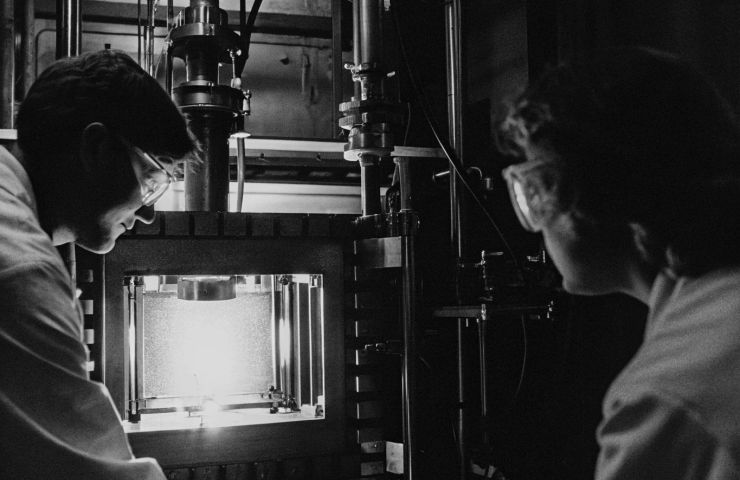
Hydrogen Production: POSTECH–SNU Unveil Rapid Discovery of High-Performance Oxide for Green Hydrogen
August 27, 2025It’s no secret that green hydrogen has become a linchpin in the global push towards industrial decarbonization. Yet most production methods still rely on costly or carbon-intensive steps. That’s why the news from the dream team at POSTECH and SNU feels like a breath of fresh air. They’ve pinned down a new complex oxide, (MgMnCo)0.65Fe0.35Oy, that churns out clean hydrogen with just heat—and they discovered it in a single day using a slick computational trick.
Breaking Down the Breakthrough
In labs at POSTECH’s Mechanical Engineering Department in Pohang and SNU’s Materials Science wing in Seoul, a group led by Professor Hyungyu Jin and Professor In-Ho Jung showed that (MgMnCo)0.65Fe0.35Oy can pull in and expel oxygen at high temps, flipping water molecules into hydrogen gas—no carbon in sight. Their controlled heating cycles delivered record-setting hydrogen yields and thermal conversion efficiency, setting a new benchmark as detailed in Advanced Science.
Computational Screening at Warp Speed
Forget weeks of hit-or-miss experiments. These researchers harnessed a high-throughput computational screening platform packed with thermodynamic data, testing over a thousand candidate compositions in just 24 hours. That kind of speed chops discovery time from months to a single day, obliterating the old barriers to faster, smarter innovation in hydrogen production. And by cutting down on trial-and-error, they’ve also slashed research costs.
Strategic Impact and Cross-Sector Potential
This isn’t just about cleaner fuel for vehicles or power plants. The same redox trick could revolutionize methane reforming, supercharge battery recycling by recovering key metals, and shake up steelmaking processes. Experts believe these advances could:
- Reduce the carbon footprint of existing hydrogen production setups,
- Fuel fresh investments in sustainable energy technologies,
- Solidify South Korea’s lead in zero-emission technology.
Collaboration, Funding, and the Road Ahead
This project was powered by support from the Korean Ministry of Science and ICT’s Mid-Career Research Program and Nano Material Technology Development Program. Key players like Dr. Dongkyu Lee on the experimental side and Dr. Joonhyun Nam driving the computational work were instrumental. While lab results look rock-solid, the next big step is scaling up to pilot reactors and weaving this oxide into real-world systems.
Industry observers point out that going from gram-scale trials to multi-ton production units means smart engineering tweaks, in-depth longevity tests, and detailed cost breakdowns. Still, this move toward much faster discovery and high performance charts a clear path: rapid iteration cycles, richer material libraries, and tighter feedback between digital design and hands-on experiments.
What This Means for Hydrogen Infrastructure
For utility companies, fuel cell technology developers, and transport or power-generation folks, a heat-driven, emission-free route to H2 offers serious flexibility. It can fill in when renewables-driven electrolysis hits a wall, and it pairs beautifully with solar thermal or waste-heat systems. As hydrogen storage matures and fuel cell costs drop, having diverse feedstock options is crucial for building a resilient, large-scale hydrogen infrastructure.
Plus, with global hydrogen demand expected to surge by over 500% by 2050 in some scenarios, unlocking cost-effective, carbon-neutral pathways has never been more urgent. Innovations like (MgMnCo)0.65Fe0.35Oy could shift the economics in favor of truly green hydrogen, accelerating both adoption and the broader energy transition.
Looking Forward
It’s easy to get bogged down in metal ratios, redox cycles, or screening algorithms. But the big takeaway is this: marrying cutting-edge computation with targeted lab work can fast-track our march to carbon neutrality. As the POSTECH–SNU collaboration gears up for industrial trials, we’ll be watching to see how quickly this discovery translates into real-world, zero-emission hydrogen production facilities. If they nail it, it won’t just transform hydrogen production—it could rewrite the playbook for materials research across the clean energy sector.



 With over 15 years of reporting hydrogen news, we are your premier source for the latest updates and insights in hydrogen and renewable energy.
With over 15 years of reporting hydrogen news, we are your premier source for the latest updates and insights in hydrogen and renewable energy.